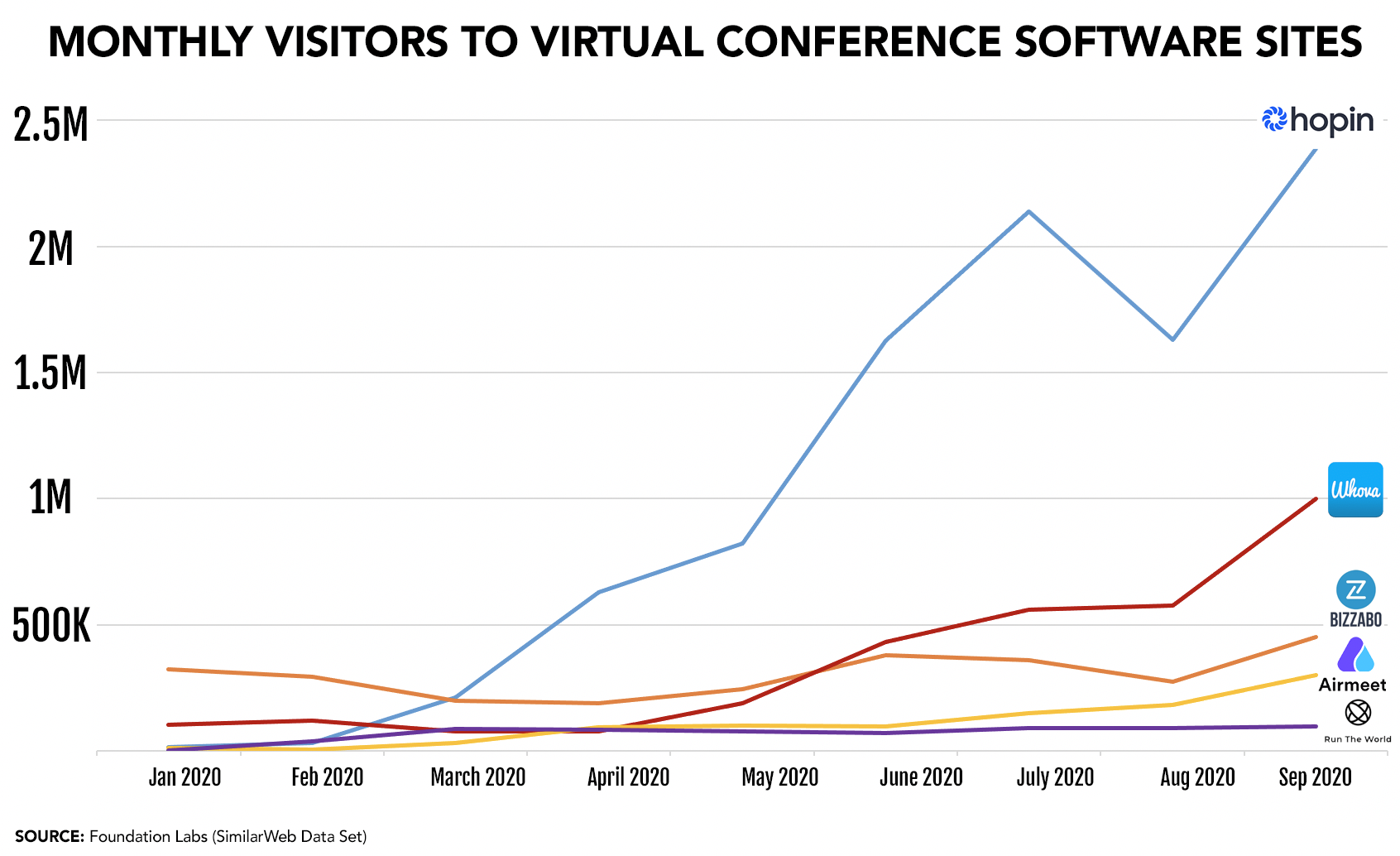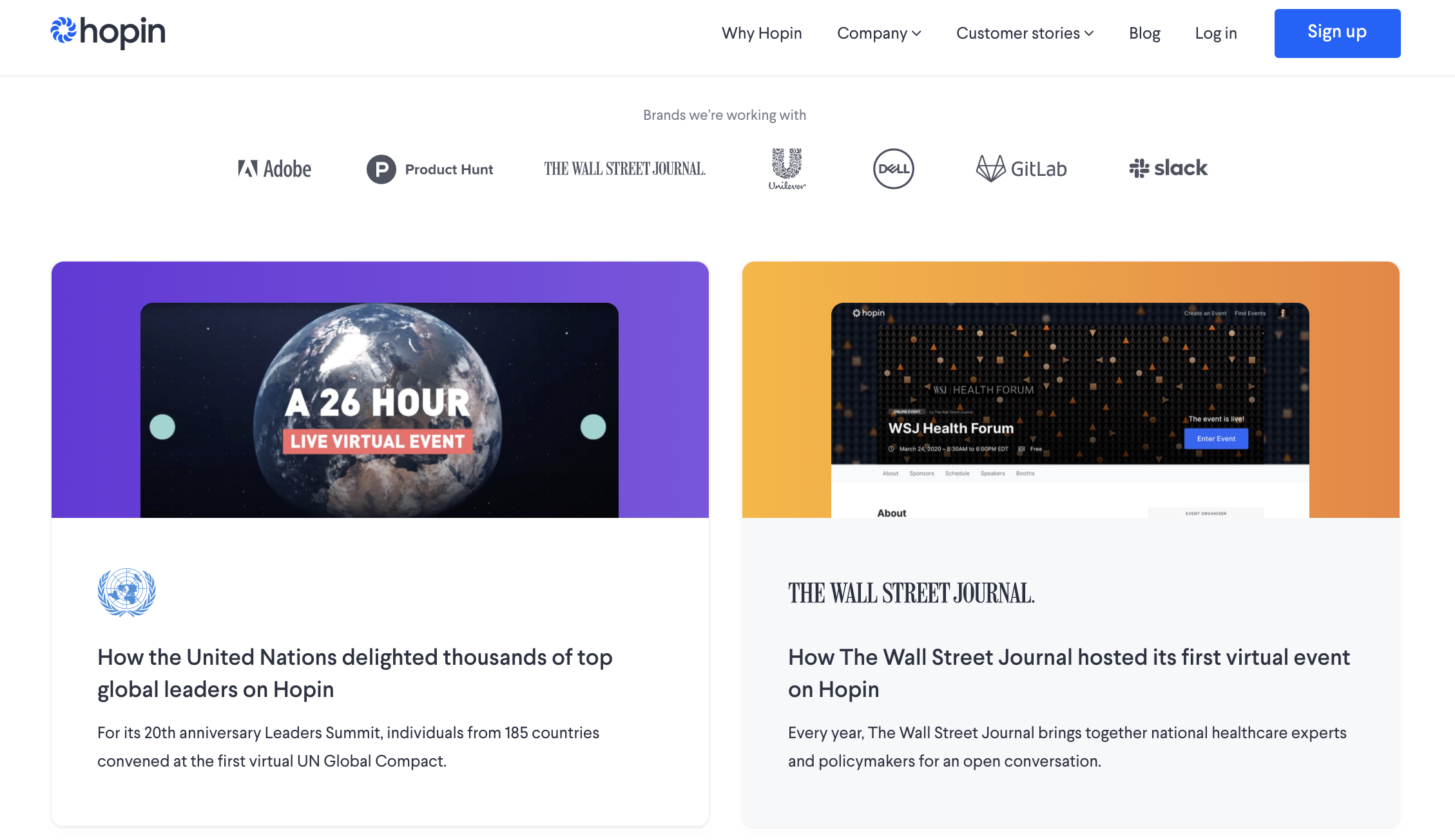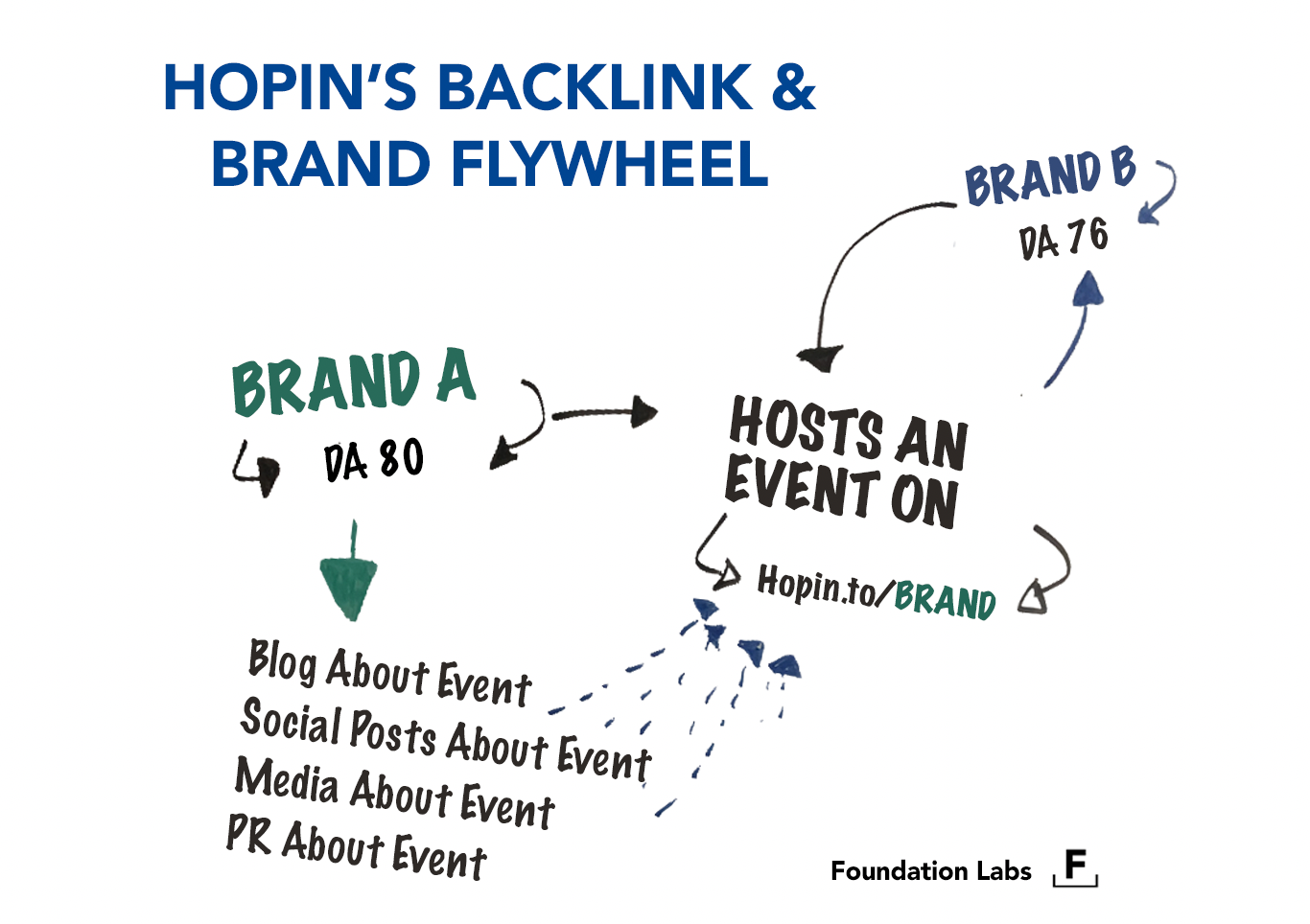Article's Content
A few weeks ago I attended a board bootcamp where I was introduced to an event platform called Hopin. I had heard of the platform in the past but had never experienced it first hand. Since the start of the pandemic, the number of online events being held have exploded at a rate that no one could have seen coming this time last year. The last few months have accelerated the adoption rates of so many technologies, services and experiences beyond our wildest imaginations.
- The adoption of ecomm has accelerated.
- The adoption of esports has accelerated.
- The adoption of home gyms has accelerated.
- The adoption of remote work has accelerated.
- The adoption of virtual health has accelerated.
- The adoption of video conferencing has accelerated.
And so much more…
Hopin is an online events platform where you can create engaging virtual events. One of the coolest parts of Hopin (from my humble opinion) is the speed networking experience within the app. You join a lobby and are matched with people who are also attending the virtual conference for short 5 minute chats (think speed dating but business) and see their bio, LinkedIn, etc…
It’s pretty slick.
Semil Shah, a prominent VC recently named Hopin his breakout tech company of the year.
Shah is the founder of seed/pre-seed firm Haystack, and a venture partner at Lightspeed. His portfolio of startup investments includes Instacart, DoorDash, OpenDoor, Figma, Carta, Hashicorp, Giphy, ManagedByQ, to name just a few. Here’s a few of the other companies he’s singled out:
Stripe in 2012. Snapchat in 2013. Slack in 2014. Coinbase in 2017. Airtable in 2018. And Superhuman in 2019… Not a bad resume for predicting break out opportunities eh?
In his breakout post he writes:
There are other startups in the space, and I’m sure they’re doing well because this can’t be a winner take-all market. That said, I feel comfortable saying that Hopin is likely growing faster than their peers.
I wanted to find out…
So… I decided to take a closer look at the Virtual Events product landscape to see who was actually lighting the industry on fire and poised for an unparalleled break out. I came across a few companies in this space that really stood out as innovators:
Whova, Bizzabo, Airmeet, Runtheworld and Hopin
There are major players entering the ring in this space like Eventbrite & Cvent but I want to focus on companies that are early & laser focused on the vertical of online events. The money flowing into the companies trying to shake up this space is significant…
- Hopin raised $40M
- Bizzabo raised $27M
- Airmeet raised $12M+
- RunTheWorld raised $10M+
- Whova raised $6M (in 2015)
That’s $95M total… That’s half of the cost to buy the Philadelphia Eagles in 2004.
Random…. I know. But it turns out…
The money invested does somewhat follow the volume of traffic these sites are getting:
- Hopin – 9M visits
- Bizzabo – 2.7M visits
- Whova – 3.1M visits
- Airmeet – 966k visits
- RunTheWorld – 638k visits
Here’s a snapshot of how well the companies are doing generating traffic:

That’s what we call content excellence.
In less than a year, Hopin has gone from an idea on the back of a napkin to a SaaS product generating more than 2 million visitors every single month.
In April, we published a study covering the 9 fastest growing software categories. At that time, web conferencing (+500%), video platforms (+265%) and webinars (+226%) were all indicators that this space was going to be one of the hottest in 2020 but until you see the scale in action — it’s often hard to predict the true potential.
So what marketing techniques in particular have allowed Hopin to explode?
I’ll be diving deeper in the coming months but for now I want to focus on one specific area. It’s the implementation of a backlink acquisition strategy that may or may not have been intentional when they created their product… But it’s a thing of beauty.
Let’s dive in.
Creating A Mutually Beneficial Backlink Viral Loop With Every Event
First things first…
I want to acknowledge that there’s still a lot to be accomplished by all of these companies and while Hopin is well ahead of the competition… There’s great things being done on the product, SEO & content front by all their competitors. Whova in particular stands out as a solid competitor who is well on their way to carving out a dominant position next to Hopin in this space.
But one thing that Hopin is doing REALLY WELL is this:
Generating backlinks from highly authoritative sites.
How?
Attracting highly authoritative customers to the platform. A quick look at their case studies and you can quickly see that they’re attracting heavy hitters across all industries:

Now imagine you’re an SEO getting backlinks from the United Nations, Wall Street Journal, Adobe, Unilever, Dell, Gitlab and Slack. You’re probably feeling pretty good about yourself. You should be…
Those sites linking back to your domain are going to provide a serious boost in your credibility and make it easier for you to rank for keywords that are relevant to your typical buyers search intent. The key to making it easy for your site to capture these links is to create a product in which your customers are incentivized to link to.
This is Hopin’s Brand & Backlink Flywheel…

Brand A is running an event using Hopin.
To run an event using Hopin, it’s required to create a landing page that uses the Hopin URL and has Hopin branding throughout. As a result, Hopin benefits from both (1) the brand exposure when someone lands on Brand A’s event but also (2) the backlink benefits that come from Brand A promoting the event. Now here’s where it gets even more interesting…
If Brand A is trying to attract people who may be interested in running their own future event, it’s possible that Brand A’s marketing efforts lead to Brand B signing up for Hopin. Upon signing up for Hopin, the cycle continues and they are met with the growth that we’re all witnessing amidst the emergence of an industry break out.







